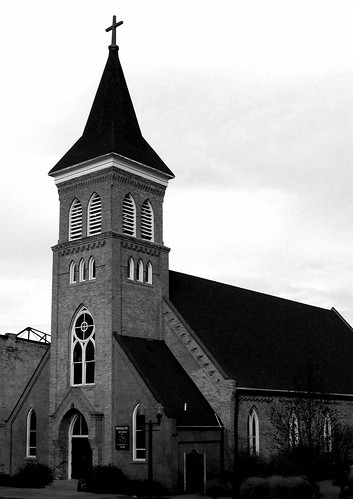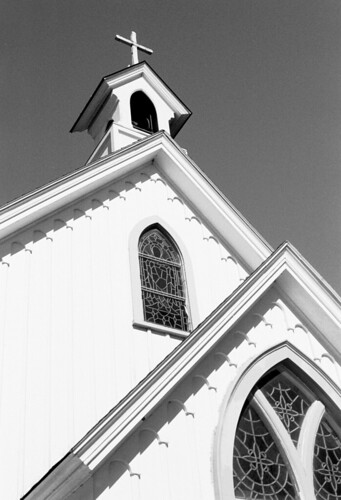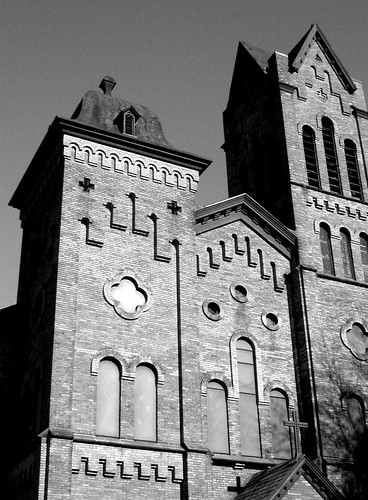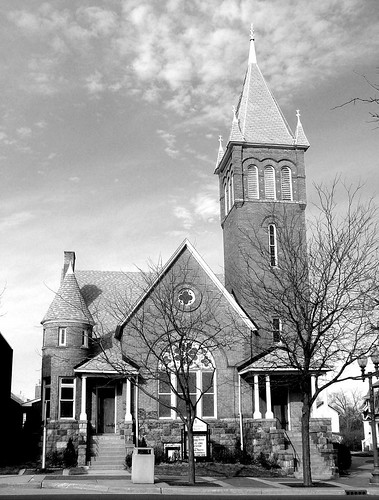The Gothic and Romanesque Revivals brought forth a wave of churches to small and large towns across the country, many of them sharing similar, Americanized characteristics.
Gothic Revival (~1830 to ~1860)
The Gothic style is most easily identified by its pointed arch, found on windows and doors. Other characteristics of the Gothic Revival style are trifoils and quatrefoils, tracery windows, rose windows, and steeply-pitched roofs. In Europe, the Gothic Revival heralded grand cathedrals and mansions, while in America, the buildings were usually downsized to a more humble scale. The style was used not only for churches, but for houses, cottages, university buildings, and the occasional American castle. Instead of having two steeples like their larger European counterparts, the smaller churches in the United States often had only one. Construction materials ranged from brick to stone to whitewashed clapboard, but the overall Gothic aesthetic was always recognizable. (There are, of course, many exceptions: larger cities became home to Gothic Revival cathedrals of grand scale; St. Patrick's Cathedral in New York City and the cathedrals that line the streets of Detroit are some examples.)

A Gothic Revival Catholic church in Hillsdale.

A tiny church in Harbor Springs -- though it is much simpler and built from whitewashed clapboard, it still exhibits the Gothic arch.
Romanesque Revival (~1840 - ~1900)
At the same time that the Gothic Revival came to be popular, the Romanesque Revival did, as well. The Romanesque style is identified by its rounded arches -- semicircular arches above windows and doors. Buildings often had two towers of differing heights, covered with different roofing styles. The Romanesque Revival was used most commonly for churches and public buildings.

The First Congregational Church in Jackson. Note the rounded arches and unique towers.

Saline's Presbyterian Church was built in 1898.
1 comment:
Post a Comment